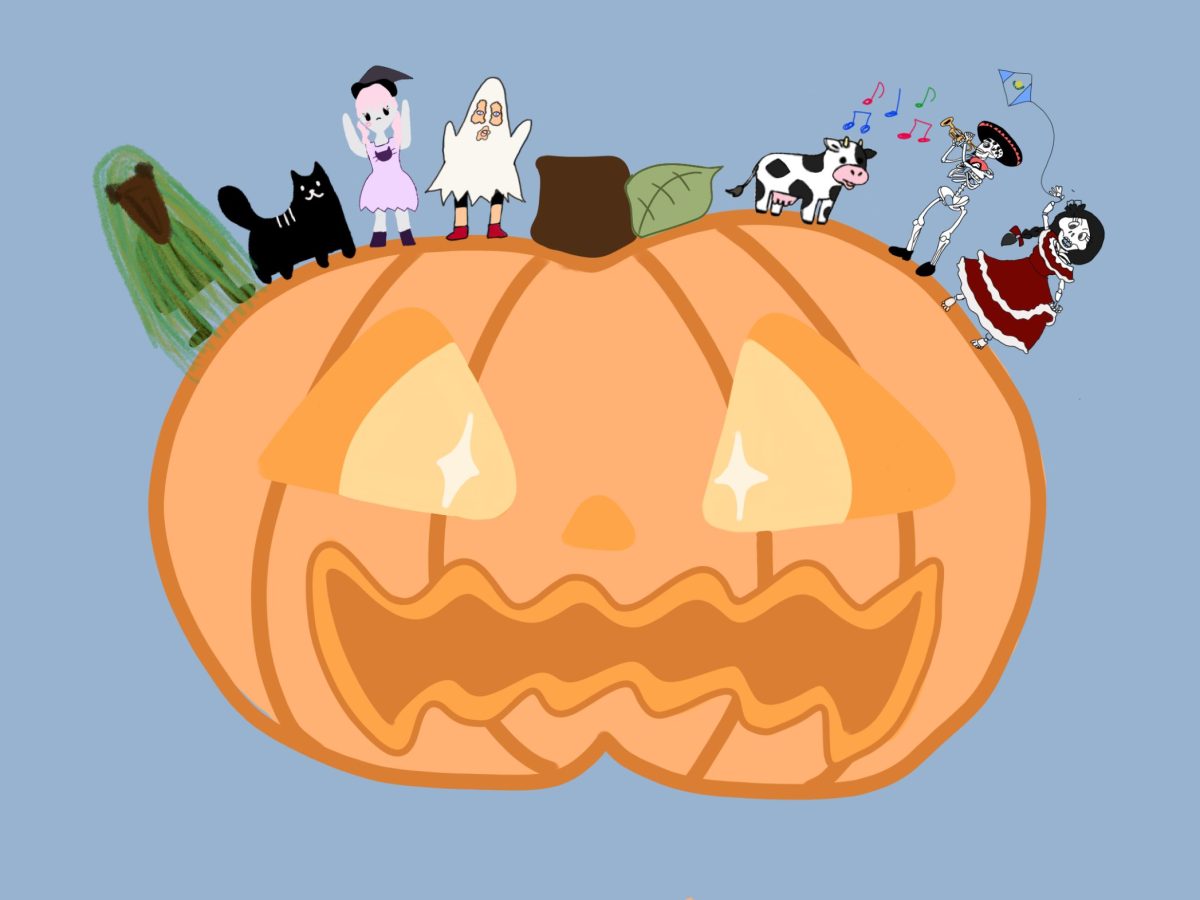Across the globe, many cultures have their own traditions to honor the deceased. While American Halloween festivities involve lots of candy and costumes, most celebrations outside the United States focus on the less commercialized aspects of their Halloween-adjacent holiday.
Heading back to the origins of modern-day Halloween, the pagan festival Samhain was celebrated to mark the winter solstice in Ireland over 2,000 years ago. It was believed that on Oct. 31, the thin veil separating the Otherworld from the living was breachable; during this time, it was expected that deceased ancestors were to cross over and visit the living.
Ancient traditions included leaving treats or offerings on the outer bounds of the village to keep monsters and fae at ease, and people dressed as animals to avoid being kidnapped and brought to the Otherworld.
Today, traditions have evolved into the modern customs more widely associated with Halloween, such as trick-or-treating and mumming, where community members go door to door performing skits. The predecessor to the beloved modern holiday has influenced the many renditions of Halloween festivities across the globe, drawing from the original customs and traditions of ancient Ireland.
In Central and South America, there are many traditions and celebrations to honor the deceased. Most commonly celebrated in Mexico, Día de los Muertos – Day of the Dead – spans from Oct. 31 to Nov. 2. Known for its motifs of colorful Calaveras (skulls), the festival involves the creation of ofrendas or altars that are decorated with lights, sugar skulls, treats and memorabilia and often include a photograph of the loved-one being honored.
Dating back 3,000 years ago, the modern celebration combines ancient Aztec customs with the European holiday All Souls’ Day, which was brought over to Mesoamerica by Spanish colonists in the 1500s. In Guatemala, giant kites are flown during the last couple days of Día de los Muertos. El festival de Barriletes Gigantes – the Festival of Giant Kites – is a Guatemalan tradition in which elaborate hand-painted kites are flown up to 40 feet in the air over the graves of loved-ones to bridge the gap between the land of the living and the dead.
Also associated with skulls, the Bolivian tradition Fiesta de las Ñanitas is celebrated on Nov. 8 and commemorates the forgotten dead. Ñanitas are skulls of the deceased that are kept by the living, and the identity of the skull is usually unknown, since they are typically passed down through the generations. Holders of each ñanita are said to bring them to cemeteries, where they are provided with offerings of flower petals, coca leaves, etc; it’s believed that by kindling a good relationship with one’s ñanita that, in return, the holder is granted good luck and protection for the remainder of the year.
Celebrated within Nigeria’s Igbo communities, the Odo festival takes place every other year between September and November when the Odo or spirits arrive and stay for six months. The festival is characterized by three distinct parts: the Odo Festival or arrival of the Odo, the six months stayed within their ancestral homes and the Awuru Odo Festival, also known as the departure of the Odo. As the spirits head back to the land of the dead, the community puts on a performance where men dress in plant fiber costumes to honor the dead, and musicians play percussive instruments. The dead are then sent off with prayers from their families asking for plentiful harvests and successful childbirth.
In some regions of East and Southeast Asia, people believe that the gates of the underworld open and allow restless spirits to wander free during the seventh month of the Lunar calendar which coincides with the fall harvest. The Hungry Ghost Festival, known in Taoism as the Zhongyuan Festival and in Buddhism as the Yulanpen Festival, can be traced back to the story of a Buddhist monk by the name of Mu Lian from third-century China.
In Mu Lian’s tale, ‘hungry ghosts’ were described as those never satisfied with what they had while in the overworld, and consequently they are unable to find peace in the afterlife. The beginning of the event is marked with a parade, and during the festival, people burn food and delicately crafted paper in an attempt to appease the unhappy spirits. The festival concludes with families sending off floating lanterns over bodies of water, and it’s said that the further a lantern is able to travel before burning out, the better luck the family will have in the upcoming year. Today, there’s a list of things to avoid in order to keep the spirits away, and some will even try to stay inside out of fear that troubled spirits will come their way.
Around the world many cultures have passed down traditions to celebrate the deceased, even if they aren’t embellished with costumes and candy, they still capture the spirit of the well-loved holiday.




